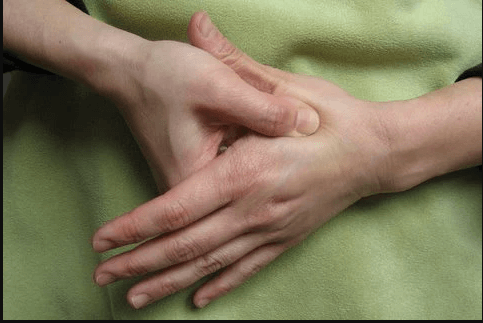You Need To Know About Acupressure Points For Constipation

Do you often find yourself struggling with constipation and looking for natural remedies to relieve it? Acupressure, an ancient Chinese healing technique, is gaining popularity as a holistic approach to treating various ailments such as pain, stress, and even digestive issues like constipation. By applying pressure on specific points of the body, acupressure helps stimulate energy flow and promote overall wellness. In this blog post, we’ll dive into everything you need to know about acupressure points for constipation so that you can say goodbye to discomfort and have a healthy digestive system!
What are acupressure points?
Acupressure is an ancient Chinese healing technique that involves applying pressure on specific points of the body to stimulate energy flow and restore balance. These points are called acupressure points or acupoints, which are located along meridian lines or pathways in our body that connect different organs and systems.
Unlike acupuncture, which uses needles to stimulate these points, acupressure relies solely on finger pressure. By pressing down on a particular point for a few seconds or minutes, you can activate its therapeutic effects and alleviate various physical and emotional issues.
According to Traditional Chinese Medicine (TCM), each acupoint corresponds to a specific organ or system in our body. For example, the Large Intestine 4 (LI4) point is associated with the digestive system and can help relieve constipation.
While there are hundreds of acupoints throughout the body, only a handful of them are used specifically for constipation relief. Knowing where they are located and how to apply pressure correctly can help you effectively manage your symptoms at home without relying on medication.
How do acupressure points work for constipation?
In terms of constipation relief, acupressure can help stimulate the digestive system and promote bowel movements.
The theory behind acupressure is based on the idea that our bodies contain energy pathways known as meridians. By applying pressure to certain points along these meridians, it’s believed that we can improve the flow of energy and relieve blockages or tension.
For constipation specifically, there are several key acupressure points that practitioners may focus on. These include points near the belly button, lower abdomen, and inner thighs. By stimulating these areas through massage or pressure techniques, individuals may experience improved digestion and more regular bowel movements.
While research is still ongoing to fully understand how acupressure works for constipation relief, many people turn to this therapy as a natural alternative to medication or other treatments. As with any form of alternative medicine, it’s important to consult with a qualified practitioner before trying acupressure for yourself.
The best acupressure points for constipation
When it comes to constipation, there are several acupressure points that can help stimulate the digestive system and relieve discomfort.
One of the most effective acupressure points for constipation is located on the lower abdomen. It’s called Conception Vessel 6 (CV6) or “Sea of Energy”. Applying gentle pressure to this point can help improve digestion and relieve bloating.
Another useful acupressure point for constipation is found on the wrist. Known as Pericardium 6 (PC6), this point is commonly used in acupuncture and acupressure to treat nausea, motion sickness, and digestive issues.
The Stomach 25 (ST25) point, which lies two finger-widths from your belly button and a little below it towards each hip bone, helps combat indigestion by boosting intestinal function. Meanwhile, Large Intestine 4 (LI4), also known as Hegu Point, which lies between your index finger’s base joint with thumb can be pressed gently using your opposite hand’s thumb until you start feeling some tenderness around those areas; then hold for about five minutes per session daily.
How to use acupressure points for constipation
Acupressure is a non-invasive, natural method that can help relieve constipation. To use acupressure for this purpose, you need to apply pressure on certain points of your body.
The first step in using acupressure for constipation is to find the appropriate points. Some of the best acupressure point constipation are located on the belly and lower back area. These include the CV6 (Sea of Energy), ST36 (Leg Three Miles), LI4 (Joining Valley) and BL25 (Large Intestine Shu).
Once you have identified these points, use your fingertips or a massage tool to apply firm pressure on them. You should hold each point for about 30 seconds while taking deep breaths.
Another way to use acupressure is by massaging your abdomen in a circular motion. Start at the bottom right side of your belly button and move up towards your ribcage before rounding down towards the left side.
You can also try stretching exercises that work on specific areas like twisting poses which put gentle pressure on abdominal muscles promoting better digestion.
By using these techniques consistently over time, you can effectively alleviate constipation through acupressure without having to rely solely on medications or invasive procedures. Read more…
Conclusion
In summary, acupressure points can be an effective and natural way to relieve constipation. By applying pressure on specific points throughout the body, you can stimulate the digestive system and alleviate discomfort.
The best acupressure points for constipation include Stomach 25, Large Intestine 4 and Conception Vessel 6. It’s important to consult with a qualified practitioner before attempting acupressure therapy at home.
Remember that while acupressure may provide relief from constipation symptoms, it is not a substitute for medical treatment or advice. If your symptoms persist or worsen over time, seek professional medical assistance immediately.
With the right guidance and approach, however, you could find that using these techniques alongside other healthy lifestyle habits leads to better digestion and overall well-being. Give it a try today!




